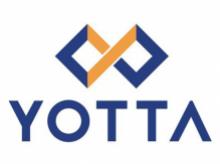Storage as a Service Market Top Growth Companies
According to the report, the storage as a service industry
generated $34 billion in 2022, and is projected to reach at $396.5 billion by
2032, witnessing a CAGR of 28.2% from 2023 to 2032.
The
increasing availability of digital infrastructure and growing usage of mobile
devices is anticipated to propel the growth of global storage
as a service market during the forecast period. In addition,
the surge in technological advancements is expected to create numerous
opportunities for market growth in the upcoming years. However, cloud data
security concerns, bandwidth limitations, and interoperability issues are
restricting the growth of the storage as a service market.
The
storage as service (StaaS) market is witnessing several key trends including
growing demand for cloud-native solutions, as businesses increasingly shift
their data storage to cloud platforms for scalability and cost-efficiency.
Furthermore, multi-cloud and hybrid cloud storage strategies are on the rise,
allowing businesses to combine public and private cloud solutions for greater
flexibility. Such factors are expected to provide lucrative opportunities for
the market growth during the forecast period
By
type, the cloud backup segment held the highest market share in 2022,
accounting for nearly two-fifths of the storage as a service market revenue,
and is estimated to maintain its dominance during the forecast period. Cloud
backup protects data from various risks, including accidental deletion,
hardware failures, data corruption, and cyber threats. Organizations can rely
on cloud backups to recover lost or damaged data, which further encourages
organizations to expand their product portfolio in cloud backup solutions.
However, the cloud archiving segment is expected to attain the largest CAGR of
32.2% from 2023 to 2032 and is projected to maintain its lead position during
the forecast period. Cloud archiving eliminates the need for organizations to
invest in and maintain on-premises archiving infrastructure, resulting in cost
savings.
By
enterprise size, the large enterprises segment held the highest market share in
2022, accounting for nearly four-fifths of the storage as a service market
revenue, and is estimated to maintain its dominance during the forecast period.
This is due to increase in adoption of advanced technologies such as StaaS and
other on-premise infrastructure, which drives the growth of the market.
However, the small and medium-sized enterprises is projected to attain the
highest CAGR of 30.7% from 2023 to 2032. This is attributed to rise in adoption
of cost-effective solutions in businesses.
By
application, the IT and telecom segment held the highest market share in 2022,
accounting for nearly one-fourth of the Storage as a service market revenue,
and is estimated to maintain its dominance during the forecast period. Rise in
demand for intelligent solutions to enhance the operations in IT and telecom
sectors is further propelling the global market. However, the healthcare
segment is projected to attain the highest CAGR of 32.6% from 2023 to 2032.
Increase in demand for mobility, rise in trend of the "Bring your own
device" (BYOD) trend, and growing supply chains along with the need to
connect industrial control systems with customary IT infrastructure propel the
demand for storage as a service.
Region-wise,
the North America segment held the highest market share in terms of revenue in
2022, accounting for nearly two-third of the Storage as a service market
revenue. The increasing investment of businesses and government bodies in
advanced technologies such as cloud-based services, AI, ML, and cloud computing
to improve customer experience are anticipated to propel the growth of the
Storage as a service market. However, Asia-Pacific is expected to witness the
fastest CAGR of 32.3% from 2023 to 2032. This is attributed to increase in
penetration of digitalization and higher adoption of advanced technology are
expected to provide lucrative growth opportunities for the market in this
region.
The
COVID-19 pandemic has accelerated the adoption of storage as a service (STaaS)
as organizations across various industries faced unique challenges related to
data management during the crisis. The increased need for remote work and
online collaboration spurred a surge in data creation and storage requirements.
STaaS provided a critical solution by enabling companies to scale their storage
capacity rapidly and cost-effectively without the need for extensive
on-premises infrastructure. This surge in remote work also emphasized the
significance of data security and accessibility. STaaS offers robust data
security measures and the ability to access critical data from anywhere,
addressing the immediate need for secure remote access to important
information. Furthermore, the economic uncertainties stemming from the pandemic
led many organizations to seek cost-efficient alternatives, making STaaS'
pay-as-you-go model even more attractive. In addition, the pandemic also
underscored the importance of disaster recovery and business continuity
planning, which STaaS supports through automated backup and recovery solutions.


































Leave A Comment